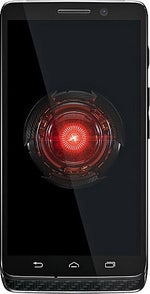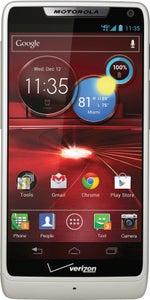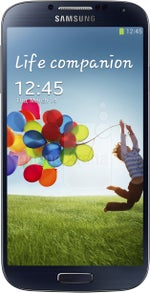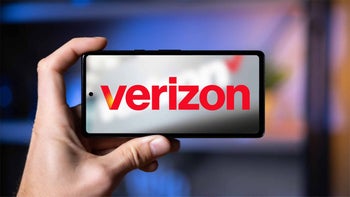Motorola DROID Mini Review

This is a small review of the Motorola DROID Mini, as it shares many of the same features that are on the DROID Ultra, which you can read about here.
Introduction
Just as the Motorola DROID Ultra is this year’s replacement for the DROID RAZR HD, the new DROID Mini takes the place of the DROID RAZR M in the line-up. In fact, both the DROID Mini and DROID Ultra share similar features, such as the 1.7GHz Motorola X8 SoC, 10MP Clear Pixel camera, and Kevlar construction. With the Mini, all is coming in a smaller package for those not looking for a massive smartphone.
Included in the retail package is the Motorola DROID Mini XT1030, wall charger with microUSB cable, and user guides.
Design
As the name implies, the Motorola DROID Mini is a smaller version of the DROID Ultra. In fact, it is almost the same size and weight as the DROID RAZR M, which makes it quite compact and comfortable to hold. Even though the DROID Mini is slightly thicker than the DROID Ultra, this doesn’t take away from the overall appearance.
Both the DROID Mini and DROID Ultra share the same Kevlar construction, allowing for it to be tough and durable, but at the same time we’re not a fan of the glossy backing that is a fingerprint magnet. We believe a better choice would have been the soft-touch coating, which is used on the DROID MAXX.
Display
Even though the DROID Ultra received a larger display this year, the DROID Mini remains at 4.3”, though instead of using Super AMOLED technology, the DROID Mini is sporting an LCD display with a resolution of 720x1280 pixels. When looking at the DROID Mini next to the DROID Ultra, the Super AMOLED on the Ultra does have more “pop” to it, but the LCD on the Mini still looks great. In fact, due to the higher pixels-per-inch, both text and images look a bit sharper on the DROID Mini. The only downside is that DROID Mini’s LCD screen doesn’t have as wide of viewing angles, and is not as bright and visible when viewed in heavy sunlight.
Also on board is the Active Display notification feature, which we’ve seen on the Moto X and DROID Ultra. Basically what it does it allows you to nudge the phone, and only the center of the display will turn on showing the date and time. Then if you get any notifications, such as a new message or a missed call, only that part of the display will turn on. This way, the device will conserve power since it does not have to turn on the entire display.
Motorola DROID Mini 360-Degrees View:
Interface and Functionality
Wow, take a look at that! The Motorola DROID Mini is running the exact same flavor of Android 4.2.2 Jelly Bean that we saw on the DROID Ultra. All joking aside, we’re glad to see Motorola using the same software across multiple devices in its DROID line-up. Like we mentioned before, it’s as close to stock as possible, with 5 home screens, apps drawer and widget selection, but still has some extra additions.
These include Touchless Control, which is voice recognition with the Google Now experience, Motorola Assist, Droid Zap for sharing images and videos to other nearby phones, Motorola Migrate to transfer setting from your old phone to your new phone, and Wireless Display. You can read more about these exclusive Motorola features in the DROID Ultra review here.
Processor and Memory
Again we see the use of new Motorola X8 SoC, which combines a 1.7 GHz dual-core application processor, 400 MHz quad-core GPU, a natural language processor core, and a contextual computing core. The latter of which is used for voice recognition of Touchless Controls and the behind-the-scenes working of Motorola Assist. (You can read more details about the X8 here).
Since the Motorola DROID Mini and DROID Ultra make use of the X8 processor and have 2GB of RAM, it’s only natural that both devices would have similar benchmark scores, but they also stack-up nicely when compared to other devices that use standard quad-core processors. The DROID Mini is plenty quick in its boot-up time, loading and running apps, multitasking, and playing games.
| Quadrant Standard | AnTuTu | GLBenchmark 2.5 (Egypt HD) | Vellamo (HTML5 / Metal) | |
| Motorola DROID Mini | 8827 | 19252 | 5982 / 53 fps | 2449 / 775 |
| Motorola DROID Ultra | 8609 | 19384 | 5973 / 53 fps | 2455 / 768 |
| Samsung Galaxy S4 | 12078 | 24701 | 4437 / 39 fps | 1702 / 704 |
| HTC One | 12481 | 23308 | 3551 / 31 fps | 2395 / 781 |
One area of disappointment with the new devices is that the DROID Mini and Ultra lack a microSD card slot for expanded storage, which means you are limited to the internal 16GB. This then gets divided into the Android OS (4.97GB), Apps, etc, which leaves you with about 9GB of usable space out of the box. The only way to have more storage space is to opt for the DROID MAXX, which comes with 32GB of internal storage.
Internet and Connectivity
Combining both the X8 processor and Verizon’s 4G LTE data network, the Chrome browser on the Mini is a breeze to use. Pages load fast and properly rendered, with pinch-to-zoom and scrolling being quite fluid.
When using the SppedTest.net app, we were able to get between 15-27 Mbps downloads and 10-15 Mbps uploads depending on the area, time of day, and signal strength. Since the device is Global Roaming ready, it can also be used in other countries with EDGE/GSM (850/900/1800/1900MHz), HSPA/UMTS (850/900/1900/2100MHz), supporting HSDPA 42.2 Mbps (Category 20) and HSUPA 5.76 Mbps speeds.
Other connectivity includes Wi-Fi 802.11 a/b/g/n (2.4GHz and 5GHz), Bluetooth 4.0 with EDR, and NFC.
Camera
This year, Motorola is featuring a new 10MP Clear Pixel camera on several of its devices, including the DROID line. Instead of using a standard RGB sensor, the Clear Pixel sensor uses RGBC, with the C standing for “clear”, which is said to help collect up to 75% more light. This is combined with an f/2.4 aperture lens and 1.4 micron pixel size.
The camera interface is identical to the one of the Moto X and DROID Ultra; minimalistic in its nature with some basic settings, and lacking any fancy color effects/modes. Swiping over to the right will pull-over a dial on the left that allows some user options for HDR, flash, tap to focus, slow motion video, panorama, geo-tag, shutter tone, and quick capture (which allows you to quickly launch the camera just by flipping it in your hand twice) though we did notice that it sometimes didn’t work all that well. There is also continuous burst shooting, all you have to do is press-and-hold on the screen for it to take one picture after another. One option missing is a way to change the camera resolution, as it is fixed at 10MP 4320x2432 pixel resolution widescreen.
For indoor images with bright light, images continued to look passable, but the ISO was at 640, which did cause for a bit of visible grain. As we moved to lower light, the ISO jumped all the way to 2500, which made the image plenty bright, but colors and details were noticeably blotchy looking. The single LED flash does a good job illuminating the room, but again we have an ISO of 2000 with a lot of grain, and colors have a bit of a green-hue to them.
Videos are recorded at 1080p resolution at 30fps and with a data rate of 17 Mbps, allowing for smooth playback without any jittering effect. Even though videos look good for the most part, we did notice that when going between bright and dark areas, it does take a few seconds for the exposure to readjust, and the focusing can take a couple seconds as well. Sound quality is pretty good, as it’s captured in 2ch stereo with a bit rate of 128 kbps and a 48 kHz sampling rate.

Multimedia
With the Motorola DROID Mini being almost stock Android as possible, the gallery app is straight forward and easy to use without any unnecessary clutter. All pictures and videos are shown in a thumbnail view, based on their file directory. But there are still some built-in picture adjustments available, such as color effect, borders, and cropping.
When it comes to video playback, again there are no surprises here, as it can play pretty much any file you can though at it, including MPEG4, H.264/263, DivX and Xvid.
Call Quality

Battery
As it turns out, both the Motorola DROID Mini and DROID RAZR M come with a 2000 mAh capacity internal battery, which is said to provide up to 28 hours of usage time or 14 days of standby time. In our testing, we were able to get up to 11 hours of continuous talk time (while the larger 2130 mAh battery on the DROID Ultra could provide 13 hours of talk time), or about 1.5 days of mixed usage. But if you are a power-user and want the maximum battery capacity available, then you should look at the DROID MAXX, as it comes with an impressive 3500mAh battery, though the device is larger overall.
Conclusion
With a 2-year contract price of $99.99, the Motorola DROID Mini is the most affordable of the new DROIDs, and still has the same X8 processor, software, and features that its larger siblings have. The DROID Mini is truly designed for someone that wants a smaller and more-compact smartphone. Even though the display is 4.3”, which is small by today’s standards, there is no way a larger display would fit, without making the device larger as well. Overall, we believe that Motorola did a nice job balancing form and function with the DROID Mini.
Software version on the reviewed unit:
Android 4.2.2 Jelly Bean
Baseband version: MSM8960PRO_BP_2323.011.75.00R
Kernel version: 3.4.42-gfd1a699-00151gc170e6f
Build date: Tue Aug 6 18:39:38 CDT 2013
Build number: 12.9.0Q2.X-160-OBK_TA-14-7

Follow us on Google News






















Things that are NOT allowed:
To help keep our community safe and free from spam, we apply temporary limits to newly created accounts: